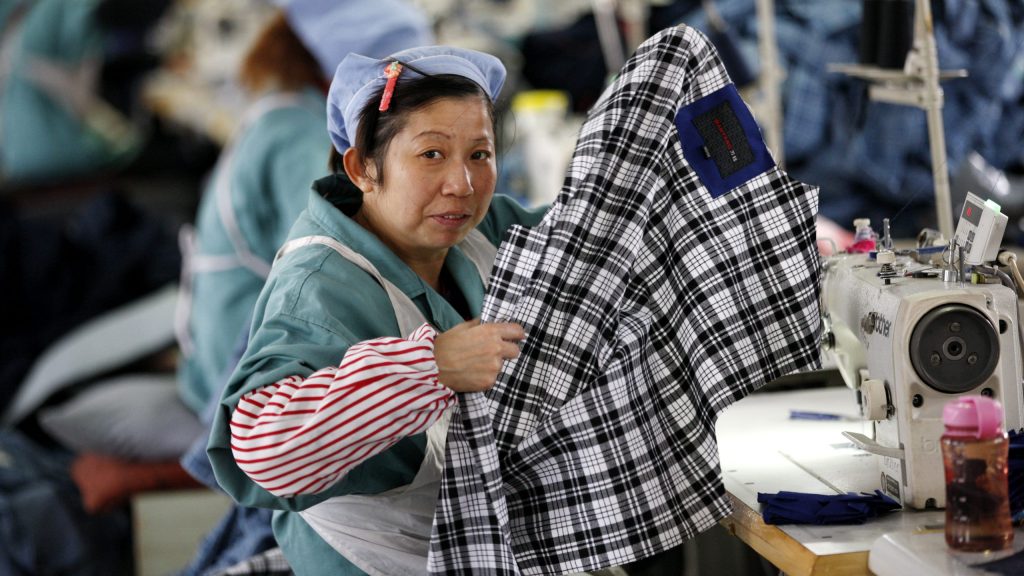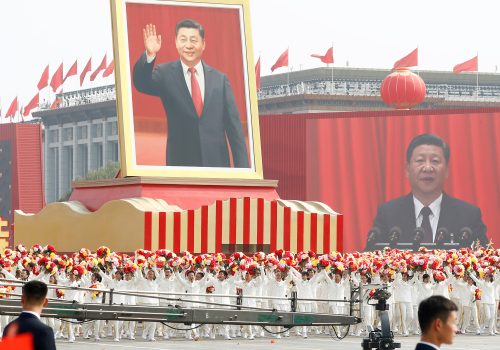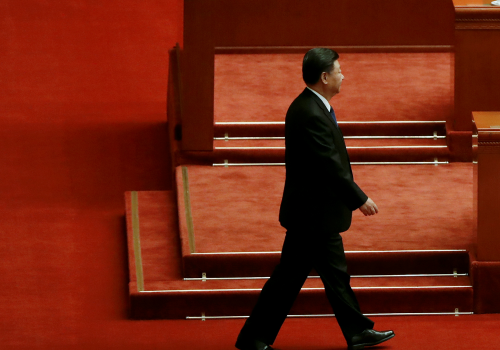Key takeaways:
-
An aging population and low birth rates, among other demographic dangers, threaten the future of China’s economy.
-
The country’s Communist Party is taking aim at the problem—but none of its proposed measures are easy fixes.
-
Still, not all is bad: Some experts say a “silver economy” of high-spending seniors could soon emerge.
This has been an annus horribilis for China’s demographics. The Seventh National Population Census revealed in May that only twelve million babies were born last year, the fewest newborns since China’s great famine in 1961. The country’s skewed sex ratio showed little change—with 111 boys born to every 100 girls—and the proportion of elderly Chinese (those 65 or older) grew from 8.9 percent a decade ago to 13.5 percent today and could reach 30 percent by 2050, predicts noted demographer Wang Feng.
Meanwhile, China’s working-age population, aged 16-59, has already begun to contract, falling by forty million workers since 2010 to 880 million today. The government predicts a loss of another thirty-five million workers over the next five years. “China has a very imbalanced population—it is too male, too old, and too few. Fertility rates have fallen so much it is imperiling economic growth and could affect social stability,” said Mei Fong, author of One Child: The Story of China’s Most Radical Experiment, in an interview.
The country is facing a demographic timebomb, one that will affect the buying power of its people, its productivity, and the future growth of its economy—perhaps even jeopardizing its ability to ever surpass the United States in its gross domestic product (GDP). These worrying population trends could also exacerbate already troubling regional imbalances and social inequality, as well as fuel crime by young men competing for scarce spouses, according to a 2019 report by the University of Melbourne’s Lisa Cameron, Australian National University’s Xin Meng, and Peking University’s Dandan Zhang. “Marriage market pressures result in a higher propensity to commit financially rewarding crimes,” they write. In 2020, there were just 8.14 million marriages, the seventh year of falling numbers and lowest level in seventeen years, China’s statistics bureau reported in November.
Shortly after the census results were released, the Chinese Communist Party’s Politburo announced that China was moving to a “three-child policy” and ending the fines previously levied on couples that had more than two children. Politburo leaders emphasized that “proactively responding to the aging population directly relates to the country’s development and people’s well-being,” and is necessary to “safeguard national security and social stability,” the official Xinhua news agency reported.
Since then, there has been a drumbeat of calls to address the challenges, including a renewed push to raise the retirement age from its current level of sixty years old for most men and fifty or fifty-five years old for women. With Beijing’s encouragement, a number of cities (including Shanghai) are extending maternity leave and putting better protections in place against job discrimination targeting pregnant women and mothers. And the National Health Commission has announced pilot programs aimed at improving elder health care in fifteen of China’s thirty-one provinces, regions, and centrally administered cities (with a nationwide rollout in 2023). More dramatically, in late July the State Council suddenly announced a ban on the once-booming private-tutoring business in an apparent effort to reduce financial and social pressures on families.
The difficult math of ‘4-2-1’
But none of these measures will easily solve China’s demographic problems. Its population has reached a level of education and income where having larger families has lost its appeal, as evidenced by the average household size dropping from 3.4 members in 2000 to just 2.6 today. While the end of the original one-child policy in late 2015 led to a two-year rise in births, more declines followed. “Despite economic development and existing stimulus to encourage childbirth, the momentum of second-child births has been waning and the untapped potential is nearly used up,” a recent article by researchers at Renmin University in Beijing concluded. “Fertility levels and new births are expected to keep falling this year,” National Health Commission official Yu Xuejun said in July.
The trend of an aging population and shrinking numbers of young people is challenging on multiple fronts. The loss of tax dollars will drain resources from already cash-strapped local governments—which are responsible for providing social welfare benefits, including education, health care, and pensions. And fewer working age people will need to support more non-working relatives. Today, China has become a society in which most families have a “4-2-1” structure, referring to how one working couple must support four parents and one child.
One of the biggest challenges will be improving social services to meet the medical, health care, and pension demands of China’s expanding crop of senior citizens. The government’s spending of around 7 percent of GDP on social welfare lags behind many other countries; the Organization for Economic Co-operation and Development (a group of wealthy countries) average is around 20 percent, while the United States is at 18.6 percent and even the developing nation of Brazil is at 17 percent. Meanwhile, the Chinese Academy of Social Sciences predicts the main pension fund for urbanites is underfunded and could run out by 2035.
The pressure on state finances will be exacerbated by Beijing’s pledge to equalize its services and allow rural Chinese to get the same quality and level of benefits, including access to better-equipped schools with more skilled teachers, as their urban counterparts. Currently, vast gaps bedevil the system: Urbanites, for example, receive pensions that are fifty times higher than rural residents on average. The cost of raising these social services to the level reached by developed countries a decade ago will cost around 20 percent of GDP by 2030, estimates Wang, the demographer, even as the government now only takes in 17 percent of GDP through taxes.
Complicating matters, less economically vibrant regions are being hit much harder by the demographic changes than wealthier regions. With its lagging health care and pensions, rural China also happens to be where 60 percent of senior citizens live. But rapid aging is also happening in places like the industrial rust belt of the northeast, where an ailing economy has sparked a massive, multi-year outflow of young people. For example, the three provinces of Liaoning, Jilin, and Heilongjiang have seen their combined populations fall by eleven million people, or roughly 10 percent, over the last decade, while the average age has gone up. Meanwhile, in southern provinces like Guangdong—long a top destination for migrant workers—the population has both grown and become younger.
The household registration, or hukou, system that blocks those from the countryside from accessing higher-quality urban social services also makes it difficult to convince China’s vast numbers of less well-off to have more children. Whereas higher fertility in the countryside once compensated to some degree for low birth rates in the cities, that is no longer true. “Most young couples in their twenties will choose not to have a child if the choice is to do so in the countryside, with only rural household registration,” one migrant worker told the Hong Kong-based South China Morning Post. “It will be just another life of inferiority.”
Meanwhile, children from better-off families have benefitted far more as China’s economy has grown in recent decades, while those from poor backgrounds have remained poor, according to researchers from the National University of Singapore and Chinese University of Hong Kong. They called this phenomenon an “intergenerational poverty trap.” Poor social mobility plus the hukou also inhibit migrants and rural Chinese from opening their wallets, instead engaging in what economists call “precautionary savings” and stocking away their meager incomes to prepare for future medical, education, and retirement costs. This puts Beijing’s aim of boosting household consumption and lowering its economy’s reliance on debt and investment further away.
Adjusting to the ‘silver economy’
The more optimistic scenario is that new economic vitality can be tapped from a better-educated workforce—that as China loses its demographic dividend, it will gain from a new “talent dividend.” Demographer Lauren Johnston of SOAS University of London argues that better-educated, more productive workers will make up for a shrinking labor force. Indeed, the overall rate of the population with a university education or higher grew from 8.9 percent to 15.5 percent over the last decade. Similarly, a “silver economy,” in which the elderly spend more on health care but also on entertainment and travel, is also expected to emerge. That would provide a significant boost to falling consumption as the overall population gets smaller and, much like the expected productivity gain from better-educated workers, help propel the economy forward.
But research by Stanford University economist Scott Rozelle shows the deep gaps between the educational achievement of rural youth and urban youth are not quickly narrowing. While more than 90 percent of city kids today have a high school education, only about one-quarter of their rural counterparts finish high school. That’s also due largely to the hukou, which bars most migrant children from studying at the much better schools in the cities where their parents work. And with two-thirds of all children coming from rural areas—and only a quarter growing up in more prosperous cities—the emergence of a broad-based talent dividend seems distant.
There is also no guarantee that China’s aging population will spark a new consumption boom; in fact, it may even have the opposite effect. Researchers at Hunan University of Science and Technology recently showed how consumption levels have already been curbed by the need to spend ever more on taking care of the elderly. “The crowding-out effect of the aging population on household consumption is obvious,” they wrote. “The higher the elderly support expenditure, the more other types of consumption are crowded out.”
Finally, the rapid politicization of the economy under Xi—seen in the crackdowns on successful entrepreneurs and the expenditure of vast sums of government money to create indigenous technology and become more self-reliant—is likely to be a drag on GDP and divert scarce funds from meeting aging and broader social welfare needs. Last month, the International Monetary Fund warned that China’s economy is “unbalanced and momentum is slowing,” while falling productivity, decoupling, and the shrinking workforce were all long-term threats to growth.
The danger is that unfavorable demography makes China no longer competitive with lower-wage countries—while at the same time its economy is not innovative enough to move up the technological value chain to developed-country status. It could then fall into what economists call the middle-income trap, which earlier ensnared South Africa and Brazil. “There are many countries that have started the industrialization process and even briefly stepped over the threshold of being a high-income country,” Liu He, Xi’s top economic aide, wrote last month in the Communist Party-run People’s Daily. “Yet only very few countries… have truly leapt over the middle-income trap.”
Ultimately, demography will test the party’s most important target: creating a rich and powerful country by 2049 to mark the one-hundredth anniversary of the founding of the People’s Republic of China. “China faces the challenge of ‘getting old before getting rich,’” and in the worst case, might never fulfill its centenary development goal, prominent economist Cai Fang warned during a recent speech. For both China’s leaders and its people, the trials of an aging, contracting population will define the decades to come.
Dexter Tiff Roberts is a senior fellow with the Atlantic Council’s Asia Security Initiative in the Scowcroft Center for Strategy and Security. Previously, he was China bureau chief and Asia news editor at Bloomberg Businessweek, based in Beijing for more than two decades. He is the author of “The Myth of Chinese Capitalism” (2020). This is the fourth in a series of posts on China made possible by a grant from the Charles Koch Institute.
Further reading
Thu, Jan 28, 2021
The Longer Telegram: Toward a new American China strategy
Atlantic Council Strategy Paper Series By
China presents the most important challenge to the United States in the twenty-first century. To address this challenge, the United States urgently needs "an integrated, operational, and bipartisan national strategy."
Thu, Dec 16, 2021
What is “Common Prosperity” and how will it change China and its relationship with the world?
Issue Brief By Dexter Tiff Roberts
This issue brief examines the key reasons behind Xi Jinping's drive towards "common prosperity" and how it will change China and its relationship with the world.
Mon, Dec 20, 2021
The domestic challenges that threaten China’s superpower future
Report By Dexter Tiff Roberts
This report examines the key internal challenges Xi Jinping and the CCP face as China's economy undergoes its biggest transition in decades, and how these challenges will affect how China deals with the world moving forward.
Image: A female Chinese worker sews clothes at a garment factory in Huaibei, China, on January 20, 2015. Photo by REUTERS



